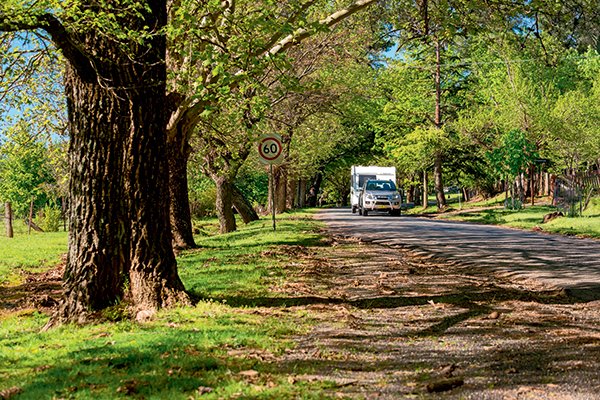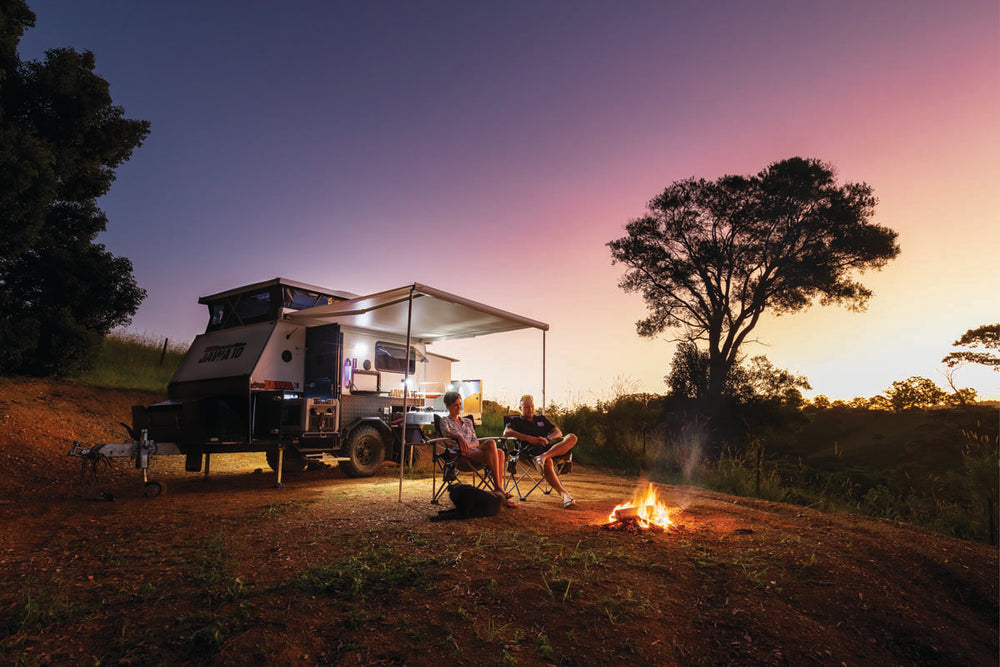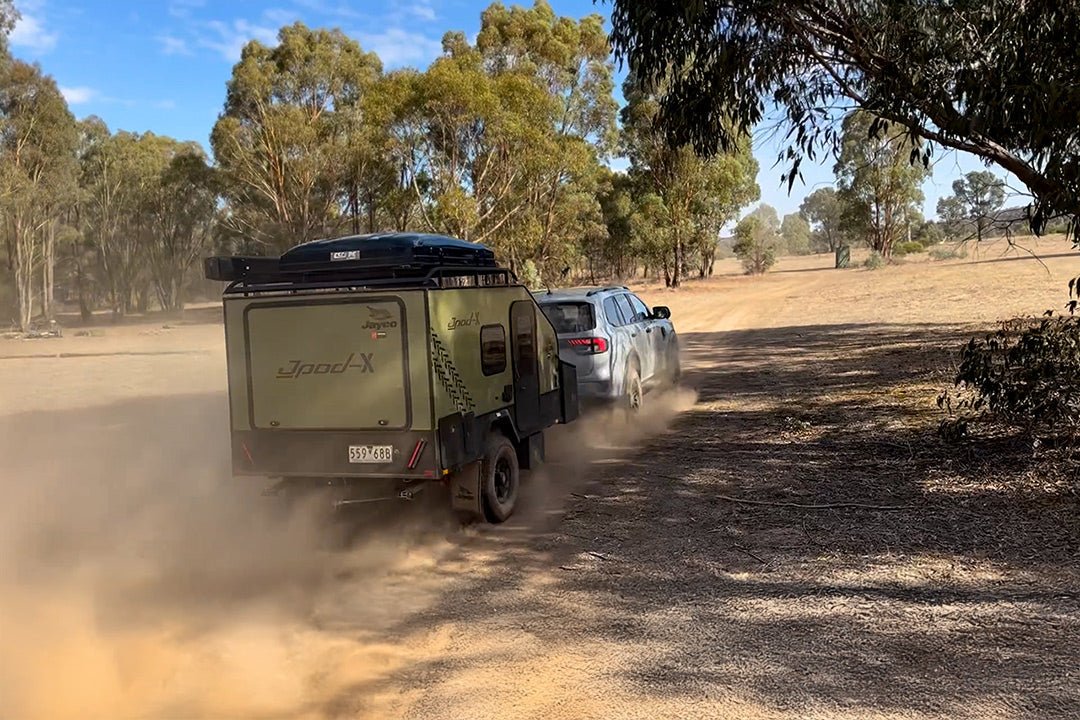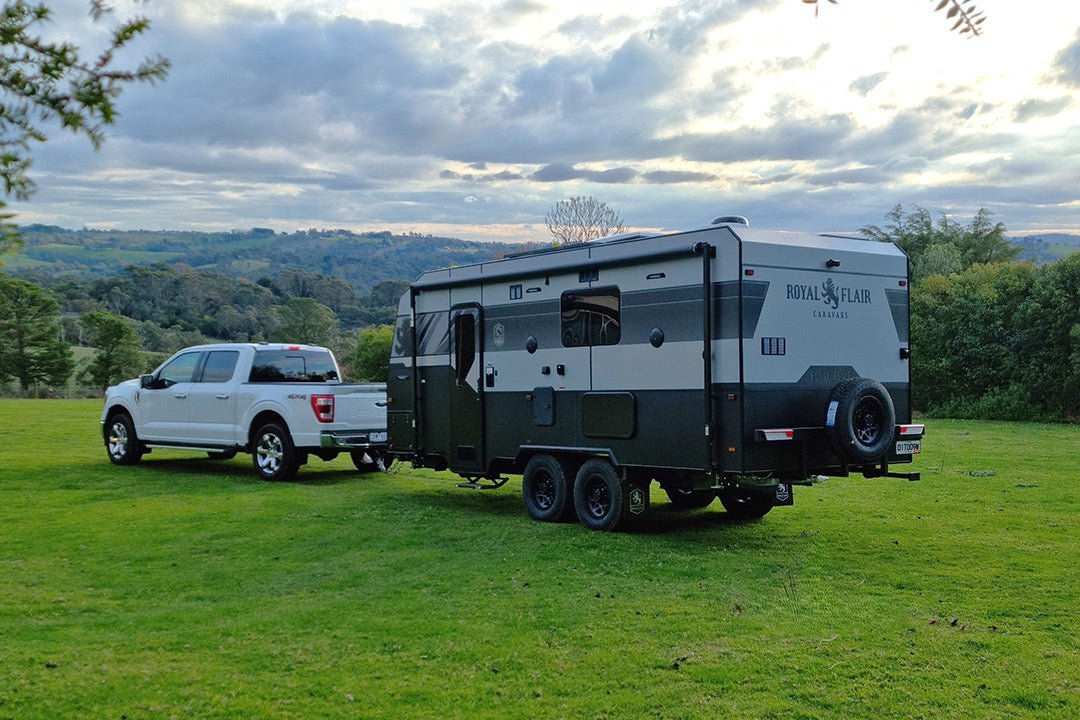Mudgee, NSW

There’s a word on the lips of Sydney-based caravanners, foodies and weekend warriors alike: Mudgee. Just a hop, skip and jump over the Blue Mountains, this historic region is rising to prominence as a burgeoning food and wine centre.
It offers fascinating colonial history, hip cafes and restaurants, chic country accommodation and excellent caravan parks and campsites. Add to the mix some of the best wineries in Australia, and you’ve got a destination bound to delight all demographics, from the young to the young at heart. And those who appreciate a full-bodied cabernet!
SOFALA
The first words that spilled out of my mouth as we drove into Sofala were, “It looks like a film set!”, and I’m sure I’m not the first traveller to utter the sentiment. Sofala is a wonderfully preserved gold rush town where it seems great care has been taken to retain the village’s historic charm.
Located 80km south of Mudgee off the Bathurst-Ilford Road, Sofala is a pretty little town in a sleepy hollow beside the Turon River.
One of Australia’s earliest gold rush towns, Sofala was established in 1851 after the discovery of gold at nearby Summerhill Creek. Thousands of people rushed to the region to try their luck, so a general store and a pub were established to service the tent city that had formed along the banks of the river.
The pub, the Royal Hotel, is still in operation today and takes pride of place on Sofala’s main street. Like the pub, the historic buildings on the main street are mostly wooden heritage structures, their low doorways and peeling paint a reminder of bygone days.
The gently winding main street is unusually skinny, a legacy from the days of horse and cart. It was made famous by the artist Russell Drysdale, whose painting Sofala is deemed his finest work by the Art Gallery of NSW, which describes the piece as ‘an expression of the quintessential qualities of an inland Australian country town’. It won the prestigious Wynne Prize in 1947, and most of the buildings featured are still standing today.
HILL END HISTORIC SITE
We then headed west for 40-odd kays until we came to the charming historic town of Hill End.
As you wander around this semi-ghost town admiring the handful of heritage-listed buildings that remain, it’s hard to conceive it was once one of the busiest and most populous towns in NSW.
In 1872, a 285kg gold nugget was found here – at the time the largest gold nugget ever recorded – and that saw the population boom to a peak of 30,000 starry-eyed hopefuls.
The town’s main street stretched for over a kilometre and was lined with thriving shops, businesses and hotels – 27 of the latter, to be precise. These days there’s just one pub, the Royal Exchange Hotel, which offers affordable accommodation, tasty meals and a wonderful beer garden.
There’s a smattering of shops housed in historic buildings and a small population of local residents, but for the most part the town is considered an historic site and is managed by NSW National Parks and Wildlife Service.
Two pleasant, grassy campgrounds are available and are perfect for caravans, with coin-operated hot showers and powered sites on offer. They’re located an easy walk from the village and can be paid for on arrival.
Taking the self-guided heritage walk is a great way to get an idea of what Hill End was like in its heyday, with plaques marking the locations of former shops on the main drag. Interestingly, little was known of the layout of the town prior to 1951, when a hoard of 3500 glass plate photographic negatives from the 19th century was found by chance in a garden shed in Sydney.
Called the Holtermann Collection, this stash painted a vivid portrait of life in a typical 1800s Australian gold mining town and allowed for the figurative ‘reconstruction’ of Hill End’s main street. The collection is kept in the State Library in Sydney, and is regarded as one of the most significant historic photography collections ever found in Australia.
After the gold receded and the boom turned to bust, the vernacular architecture and mining-modified landscape of the crumbling town began to attract artists. In August 1947, artists Donald Friend and Russell Drysdale made a trip to explore to the former gold rush town and were so taken by the character of Hill End, Friend bought a little cottage and lived there for a number of years.
GULGONG
When gold miner Tom Saunders discovered gold on a hill 25km north of the town of Mudgee in 1870, it began a rush of 20,000 people to the area, and soon led to the establishment of the town of Gulgong, which still radiates an air of those heady days.
As can be seen by the old shop fronts, Gulgong embraces its history, and it’s all around you. There are 130 National Trust-classified buildings in the area, and the township preserves more than 170 significant buildings constructed between 1870 and 1910.
Iron lacework, hand-cut board facings and elegantly curved bullnose corrugated iron verandahs reflect the swing of fortunes. From the ornate columns and features of the Post Office Hotel to the humble former Australian Joint Stock Bank’s weatherboard front there is plenty to see, and history walks are available from the local tourist information centre in Herbert Street.
Particular highlights include the Prince of Wales Opera House (where Dame Nellie Melba sang one of her earliest public performances), and ‘Lansdowne’ – a classic Australian Georgian cottage built by Henry Lawson’s father.
Established in 1962, Gulgong Pioneers Museum is known as one of the four important folk museums in NSW. It houses one of the largest collections of Australiana in the country, and is home to mining relics from Gulgong’s days as a thriving gold mining town, and Indigenous artefacts.
Also found in the museum is farming equipment, period clothing and domestic tools and utensils. With the gold rush days far behind Gulgong now, the Pioneers Museum is pivotal in preserving the difficulties, hardships, but also triumphs of the town’s early history.
Take a look at Adria Altea 402 PH Sport van review that Emma and Bec have travelled with.
The full feature appeared in Caravan World #562. Subscribe today for the latest caravan reviews and news every month!







